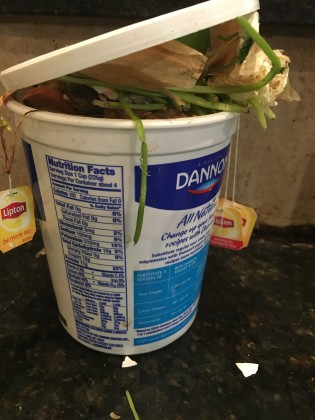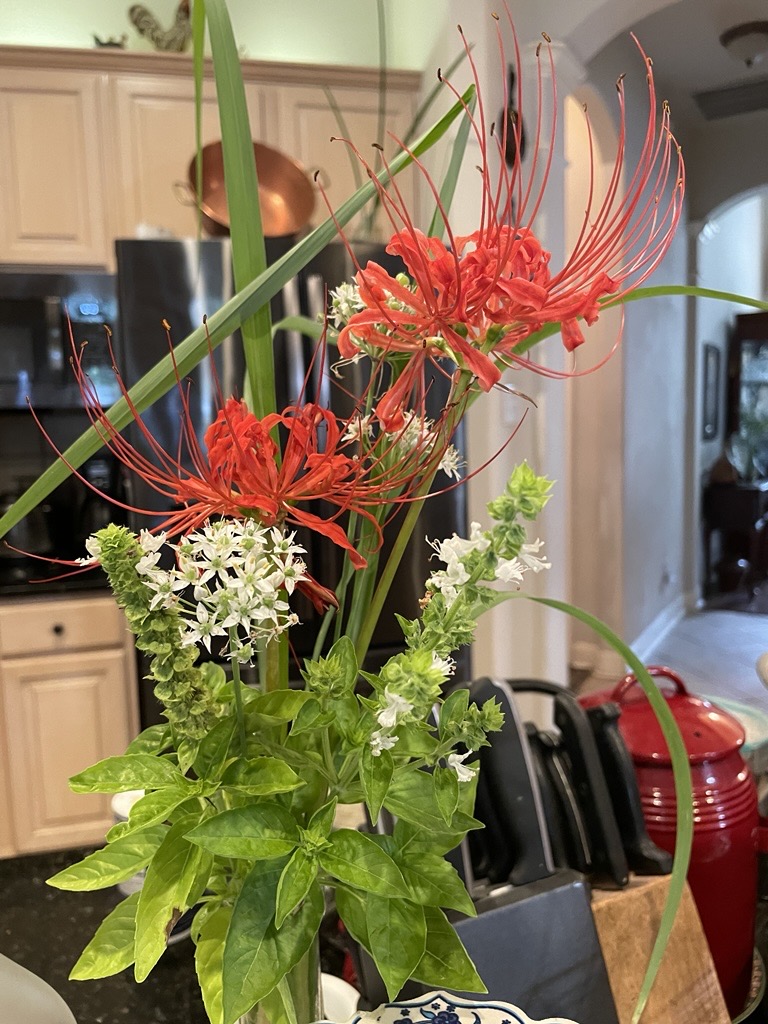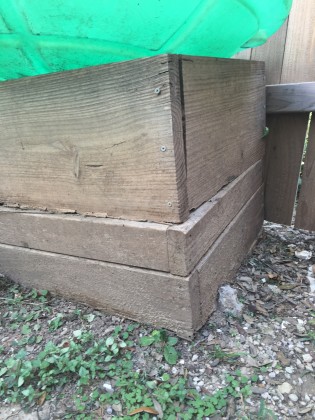I am a strong proponent of gardening as a therapeutic activity. Each morning, I start my day in my backyard, watering my potted flowering plants, raised vegetable beds, and fruit trees while enjoying my morning coffee. In my garden, I have nurtured figs, peaches, oranges, plums, loquats, and lemons, and I am currently working on mango, pomegranate, pears, custard apple, and guava trees! I also like to grow herbs such as basil, mint, curry leaves, rosemary, oregano, parsley, and lemongrass, which I use in everyday cooking. Additionally, I grow jalapeños, tomatoes, bell peppers, squash, beans, okra, and whatever other vegetables I can cultivate from seeds and saplings each season.
The joy of growing fruits, vegetables, and herbs in my own garden and cooking with them is immense. Besides growing fruits and vegetables, I also practice composting. This step elevates the experience of harvesting and enjoying my garden produce by contributing to a healthy soil structure right from my kitchen!
Composting involves collecting food scraps and turning them into nutrient-rich soil for the garden. The kitchen scraps I collect include onion skins, vegetable and fruit peels, tea bags, coffee grounds, cut flowers, and eggshells. When these are mixed with basic soil, they break down into nutrient-rich soil for the plants.
The first step in composting is to gather daily scraps in my kitchen. I began collecting compost in disposable containers with lids, such as yogurt tubs, coffee cans, or salad boxes. This way, I was composting and recycling simultaneously.
One Mother’s Day, my daughter gifted me a compost bin that kept odors under control and matched my kitchen décor. Over the years, I also discovered biodegradable compost bags that offered a clean, no-mess way to compost which I use sometimes. After collecting compost from the kitchen, I drop it into a compost crate in the backyard every day or every other day.
The second step is creating a composting area in the backyard. Our compost crate is a cost-effective, simple technique based on trench or hole composting.
In one corner of our backyard, near the other vegetable beds, we set up our composting process. We dug a 2-3 foot hole and stacked two square raised beds on the bare earth. These raised boxes are covered with a lid to keep odors and animals away. This type of compost crate allows the food scraps to be exposed to soil and earthworms, which helps them break down faster.
When our original square raised beds broke down over the years, we switched to using a couple of stacked tires over the composting hole, also covered with a lid.
We still use the trench method by adding half a bag or more of simple topsoil every few weeks to mix with the food scraps. This approach avoids digging new holes all over the backyard and burying them with soil. Instead, we pile the food scraps in the crate and layer them with half a bag or more of soil, following the trench hole philosophy. Just before spring, when preparing the vegetable beds for planting, we remove the tires and empty the compost into the vegetable beds, and add this nutrient-rich soil to start gardening.
The many benefits of composting include:
- Creating rich humus soil that adds nutrients to your garden, such as nitrogen, phosphorus, potassium, and other organic matter, which supports healthy organic gardening.
- Recycling kitchen waste effectively and using homemade compost instead of chemical fertilizers in your garden.
- Reducing landfill contributions by minimizing the amount of garbage you throw away, thus aiding in waste management.
- Helping the environment by cutting down on methane emissions through composting!









